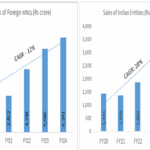Pregnancy reduces a woman’s immunity to malaria, making her more susceptible to infection and at greater risk of illness, severe anaemia and death. Maternal malaria also interferes with the growth of the fetus, increasing the risk of premature delivery and low birth weight – a leading cause of child mortality.
“Pregnant women and children are the most vulnerable to malaria, and we cannot make progress without focusing on these two groups,” said Dr Tedros Adhanom Ghebreyesus, WHO Director-General. “We’re seeing encouraging signs, but the burden of suffering and death caused by malaria is unacceptable, because it is largely preventable. The lack of improvement in the number of cases and deaths from malaria is deeply troubling.”
In 2018, an estimated 11 million pregnant women were infected with malaria in areas of moderate and high disease transmission in sub-Saharan Africa. As a result, nearly 900 000 children were born with a low birthweight.
Despite the encouraging signs seen in the use of preventive tools in pregnant women and children, there was no improvement in the global rate of malaria infections in the period 2014 to 2018 in the hardest-hit countries.
Inadequate funding remains a major barrier to future progress. In 2018, total funding for malaria control and elimination reached an estimated US$ 2.7 billion, falling far short of the US$ 5 billion funding target of the global strategy.
“High burden to high impact”
Last year, WHO and the RBM Partnership to End Malaria launched “High burden to high impact” (HBHI), a targeted response aimed at reducing cases and deaths in countries hardest hit by malaria. The HBHI response is being led by 11 countries that accounted for about 70% of the world’s malaria burden in 2017. By November 2019, the HBHI approach had been initiated in nine of these countries. Two reported substantial reductions in malaria cases in 2018 over the previous year: India (2.6 million fewer cases) and Uganda (1.5 million fewer cases).
Protecting women and children
An estimated 61% of pregnant women and children in sub-Saharan Africa slept under an insecticide-treated net in 2018 compared to 26% in 2010.
Among pregnant women in the region, coverage of the recommended 3 or more doses of intermittent preventive treatment in pregnancy (IPTp), delivered at antenatal care facilities (ANC), increased from an estimated 22% in 2017 to 31% in 2018.
WHO recommends the use of effective vector control (insecticide-treated nets or indoor residual spraying) and preventive antimalarial medicines to protect pregnant women and children from malaria. Robust health services that provide expanded access to these and other proven malaria control tools – including prompt diagnostic testing and treatment – is key to meeting the goals of the Global technical strategy for malaria 2016-2030 (GTS).
Still, too many women do not receive the recommended number of IPTp doses, or none at all. Some women are unable to access antenatal care services. Others who reach an ANC facility do not benefit from IPTp as the drug is either not available or the health worker does not prescribe it.
For children under five living in Africa’s Sahel subregion, WHO recommends seasonal malaria chemo prevention (SMC) during the high-transmission rainy season. In 2018, 72% of children who were eligible for the preventive medicine benefited from it.
Another recommended strategy – intermittent preventive treatment in infants (IPTi) – calls for delivering antimalarial medicines to very young children through a country’s immunization platform. The tool is currently being pioneered in Sierra Leone.
“IPTi offers a tremendous opportunity to keep small children alive and healthy,” said Dr Pedro Alonso, Director of WHO’s Global Malaria Programme. “WHO welcomes Unitaid’s new drive, announced today, to accelerate the adoption and scale-up of IPTi in other malaria-endemic countries in sub-Saharan Africa.”
Timely diagnostic testing and treatment are vital. But many children with a fever are not brought for care by a trained health provider. According to recent country surveys, 36% of children with fever in sub-Saharan Africa do not receive any medical attention.
Integrated community case management for malaria, pneumonia and diarrhoea can bridge gaps in clinical care in hard-to-reach communities. Although 30 countries now implement the approach, most sub-Saharan African countries struggle to do so, mainly due to bottlenecks in health financing.







